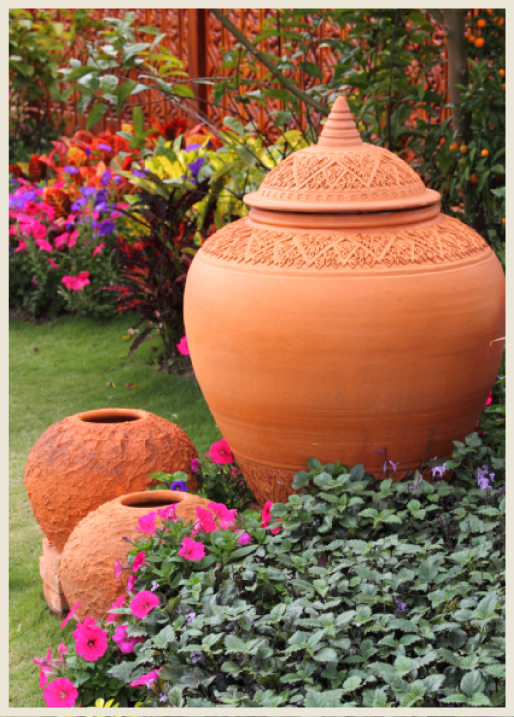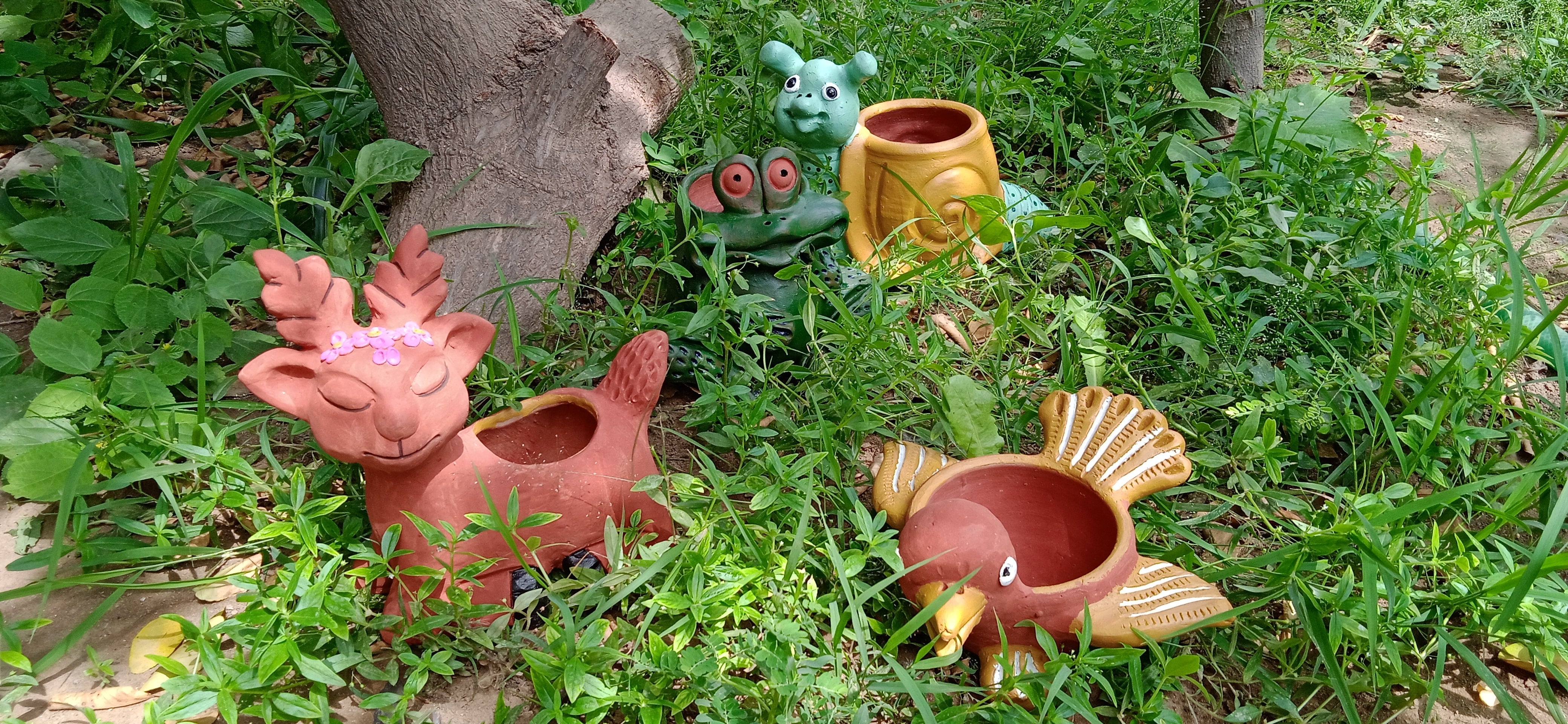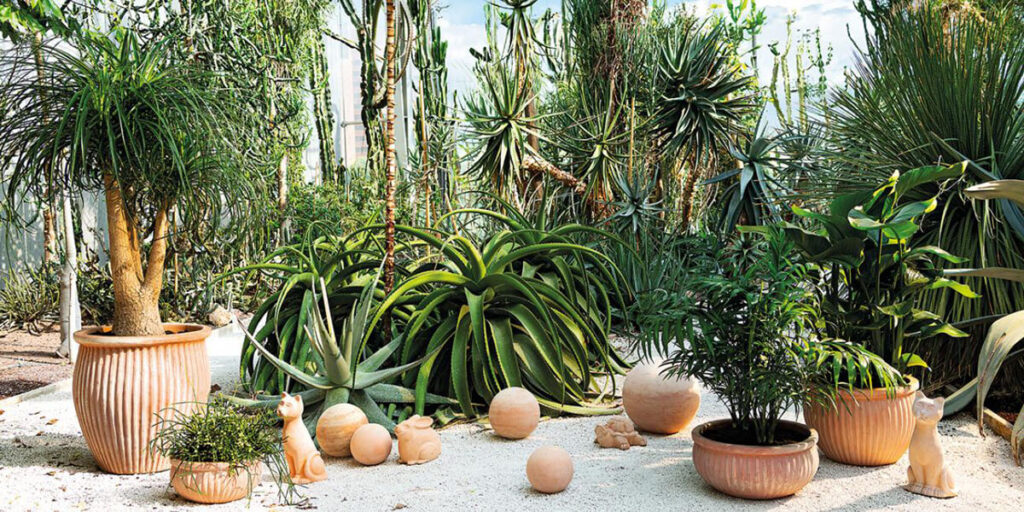Introduction to Terracotta Garden Decor
Welcome to the enchanting world of terracotta garden decor! As an avid gardener, I have always been fascinated by how the right decor can elevate an outdoor space. Terracotta, with its earthy tones and rustic charm, brings a warm and inviting touch to gardens. In this comprehensive guide, we’ll explore the beauty, benefits, and various applications of terracotta decor in your garden. Whether you are a seasoned gardener or just beginning to cultivate your green thumb, let’s dive into this creative journey together!
What is Terracotta?
Terracotta is a type of clay that is baked at high temperatures to create a durable and versatile material. Its name literally means “baked earth” in Italian. Known for its porous nature and rich, earthy color, terracotta has been used for centuries in pottery and construction, making it a time-honored choice for garden decor.
Why Choose Terracotta Garden Decor?
The Aesthetic Appeal
One of the main reasons to choose terracotta decor is its aesthetic appeal. The warm, natural tones of terracotta complement any garden style, from traditional to contemporary. Here are some popular pieces to consider:
- Plant pots
- Sculptures
- Garden edging
- Birdbaths
- Wall hangings
Durability and Longevity
Terracotta is known for its durability. Once properly seasoned, it can withstand various weather conditions. It’s resistant to UV rays and, when cared for, can last for decades. This makes it a cost-effective choice in the long run, even if the initial investment may be higher than plastic alternatives.
Environmental Benefits
By choosing terracotta, you’re opting for an eco-friendly product. Terracotta is made from natural clay, which is biodegradable and does not harm the environment. Additionally, its porous nature allows for better air circulation in plant roots, promoting healthier growth.

Types of Terracotta Garden Decor
Terracotta Pots
Terracotta pots are perhaps the most popular form of garden decor. Available in various sizes and designs, they can house a wide range of plants. Below is a comparison of different types of terracotta pots:
| Type | Best For | Pros | Cons |
|---|---|---|---|
| Standard Pots | All garden plants | Classic look, good drainage | Can crack in freezing temperatures |
| Self-Watering Pots | Plants requiring regular moisture | Reduces watering frequency | Higher price point |
| Hanging Pots | Trailing plants | Space-saving, decorative | Needs sturdy support |
Terracotta Sculptures
Sculptures made of terracotta can add a touch of artistry to your garden. From whimsical animals to classical figures, these pieces can be focal points that spark conversation. From personal experience, a well-placed sculpture can create a stunning visual narrative in your garden.

Garden Edging and Pathways
Terracotta can be used creatively as garden edging and in pathways. It provides structure and definition to garden beds while enhancing the overall design. A terracotta edge gets better with age, blending beautifully with the garden over time.
Birdbaths and Feeders
Birdbaths made from terracotta are both functional and decorative. They provide a respite for birds and are available in various designs. Watching birds visit your garden brings life and joy, making a birdbath a delightful addition to your outdoor space.

Caring for Your Terracotta Decor
Maintenance Tips
To keep your terracotta garden decor looking stunning and lasting longer, here are some maintenance tips:
- Cleaning: Use a soft brush or cloth to clean the surface. Avoid abrasive materials that can scratch the finish.
- Seasonal Care: In colder climates, consider bringing pots indoors to prevent cracking. For outdoor decor, applying a sealant can help protect against the elements.
- Regular Checks: Inspect for any signs of damage or wear. Repairing small cracks early can prevent larger issues.
Seasonal Considerations
When transitioning seasons, it’s vital to assess how your terracotta decor holds up. In winter, protect your pots from freezing temperatures by moving them to a sheltered area. In summer, ensure adequate drainage to prevent overwatering.

Personal Experience: My Terracotta Journey
As I embarked on my gardening journey, my introduction to terracotta was serendipitous. I stumbled upon a local market where artisan pots caught my eye. I brought home a few pieces, and it was enchanting to see how they transformed my space. I vividly remember my first terracotta pot; it was small but perfect for my budding basil plant. The rich color of the pot complemented the green leaves beautifully, and it quickly became my favorite piece in the garden.
Over the years, I’ve experimented with various terracotta decor, and each piece has its story. A whimsical frog sculpture became a conversation starter during summer barbecues, while my birdbath became a sanctuary for feathered friends, adding life and vibrancy to my garden.
Pros and Cons of Terracotta Garden Decor
Pros
- Natural aesthetic appeal
- Durability and longevity
- Eco-friendly material
- Variety of styles and designs
- Good air circulation for plant roots

Cons
- Can be heavy and difficult to move
- Potential for cracking in extreme temperatures
- Requires regular maintenance
- Higher initial cost compared to plastic options
Frequently Asked Questions (FAQs)
1. What is the best way to clean terracotta pots?
For basic cleaning, use a mixture of mild soap and water. Rinse thoroughly and allow to dry before using them again.

2. Can terracotta pots be left outside in winter?
It is best to bring terracotta pots indoors during freezing temperatures to prevent cracking. If that’s not possible, consider wrapping them with blankets or burlap for insulation.
3. Do terracotta pots need drainage holes?
Absolutely! Drainage holes are crucial to prevent overwatering and root rot. If your pot doesn’t have them, consider drilling holes or using a saucer to collect excess water.

4. How do I seal terracotta pots?
You can use a sealant designed specifically for terracotta. Apply it according to the manufacturer’s instructions, ensuring proper coverage. This can help protect against moisture and prolong the life of the pot.